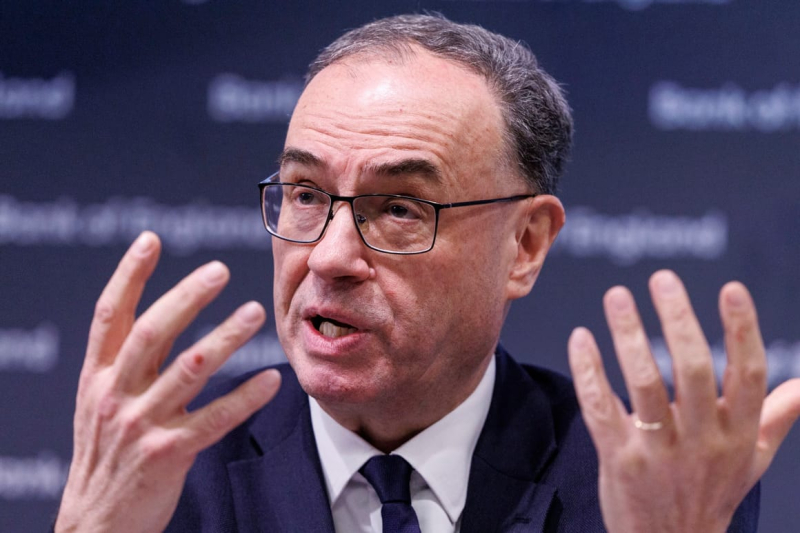The Bank’s Monetary Policy Committee cited large and two-sided risks as it cut rates to 4.25 percent.
LONDON — The Bank of England cut its key interest rate on Thursday by a quarter-point to 4.25 percent, its fourth cut in nine months, pointing to the risks of a global economic slowdown due to the trade war unleashed by the U.S.
The move will ease the pressure on businesses and households who have been hurt by a barrage of tax increases since Labour took power last year. It will also help to bring down the interest bill on the government’s own borrowing, reducing the need for Reeves to find savings elsewhere in her struggle to put Britain’s public finances on a more solid footing.
However, the Bank stressed that the outlook is still highly uncertain, and said it will “stick to a gradual and careful approach to further rate cuts.”
“Interest rates are not on autopilot. They cannot be,” Governor Andrew Bailey told a press conference.
That language is likely to disappoint those in financial markets who had hoped for a shift to more rapid easing of policy. Rob Wood, an economist with Pantheon Macroeconomics in London, said the Bank’s caution made ‘back-to-back’ cuts at the Monetary Policy Committee’s next meeting in June unlikely.
The move comes only hours before the U.S. and U.K. are expected to announce the outlines of a trade deal that should soften the direct impact of President Donald Trump’s trade tariffs, but which is unlikely to insulate the British economy completely from the fallout of more protracted U.S. struggles with China and the EU. That’s because much of the work of the U.K.’s key financial and business service sectors oils the wheels of global trade, while manufacturing exports are often intermediate inputs for goods that other countries sell to the U.S.
The Bank put a heavy caveat on its new forecasts, which see a 0.3 percent hit to U.K. growth this year, saying in its new quarterly Monetary Policy Report that the risks to its assumptions are “large and two-sided”.
“The future constellation of trade policies is impossible to predict at this juncture,” it said.
That uncertainty was reflected in a three-way split between the nine members of the Monetary Policy Committee. While five members voted for the quarter-point cut, the Bank’s chief economist Huw Pill and external member Catherine Mann voted for no change, arguing that underlying inflation is still too stubborn. At the other end of the spectrum, external members Swati Dhingra and Alan Taylor voted for a half-point cut.
However, Kallum Pickering, chief economist with brokerage Peel Hunt, said the Bank’s outlook was “much less muddled than the vote suggests,” with a clear majority for easing. He said he expects further cuts in August and November.
The Bank has gained more leeway to cut thanks to the fact that the pound has strengthened and global oil prices have slumped over the last month. In addition, the Bank said it expects some modest downward pressure on prices from the trade disruption, noting evidence of companies discounting prices to shift goods that were previously earmarked for the U.S.
Separately, the Bank expressed more confidence that businesses will swallow at least part of the increase in labor costs caused by the hike in employers’ National Insurance contributions and another 6.7 percent increase in the National Living Wage, both of which took effect last month.
As a result, it now expects inflation to return to its 2 percent target by the first quarter of 2027, slightly earlier than its previous estimates.
Inflation stood at 2.6 percent in March, down from a peak of over 11 percent in 2023. The Bank expects it to rebound in the short term, due largely to some hefty increases in prices regulated by the government, such as council tax, water and energy bills. But Bailey stressed in the press conference that he does not expect such increases to persist.
In addition, it noted the trend of falling prices for food and core goods has now reversed.
This story has been updated.

